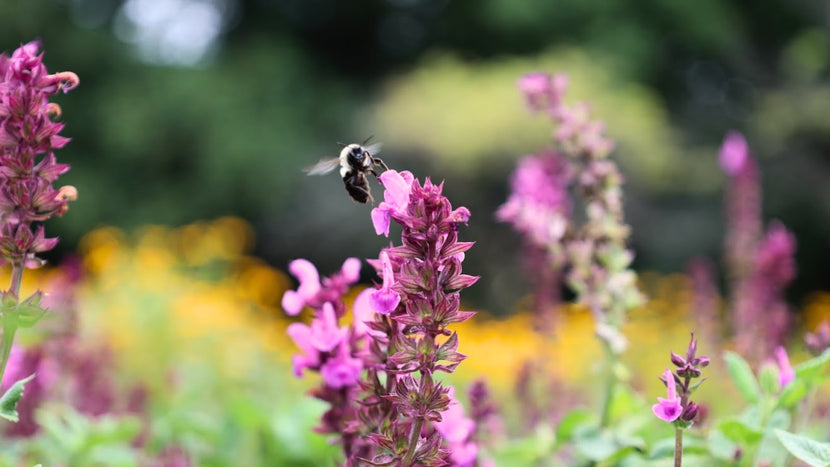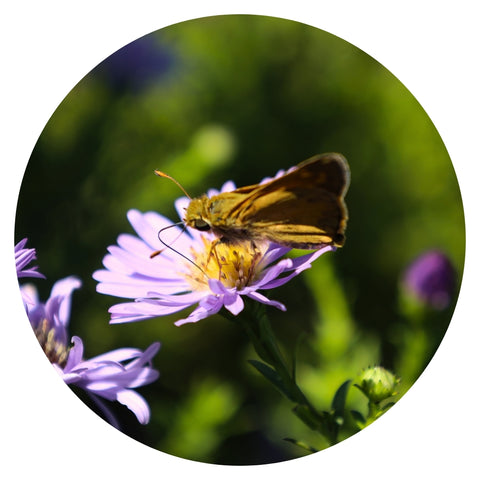
Small Pollinator Gardens With Big Impacts
In an increasingly urbanized world, the importance of pollinators cannot be overstated. These tiny but mighty creatures, including bees, butterflies, moths, and hummingbirds, play a pivotal role in our ecosystem by facilitating the pollination of plants, which in turn helps produce the food we eat.
Unfortunately, pollinators face numerous challenges today, from habitat loss to pesticide exposure, and climate change. The good news is that each one of us can make a difference, even with a small pollinator garden planted with native species. This article will explore the magic of these pocket-sized habitats and how they can transform your backyard into a haven for pollinators.
Why Pollinators Matter

Before we dive into the beauty and power of pollinator gardens, it's essential to understand why these creatures are so critical. One-third of all the food we consume relies on pollinators, and they contribute to the reproduction of 90% of the world's flowering plants. Without them, our diets would be devoid of many fruits, vegetables, and nuts. Moreover, pollinators are vital in maintaining biodiversity, helping plants adapt to changing environments and preserving ecosystems.
5 Important Factors When Building a Pollinator Garden
You might think that transforming your backyard into a pollinator-friendly haven requires acres of space, but even a small garden can make a big difference. Native plants are the key to attracting and supporting pollinators. Here's some important factors to keep in mind when building your pollinator safe haven.
- Choose Native Plants: Native plants are adapted to your local climate and provide the ideal habitat for pollinators. They have evolved alongside these insects, offering nectar and pollen that perfectly match their needs. Native plants also require less maintenance and water than exotic species, making them a sustainable choice.
- Diverse Plant Selection: A variety of flowering plants with different bloom times ensures a continuous supply of nectar and pollen throughout the growing season. This variety will attract a broader range of pollinators, from early-emerging bees to late-season butterflies.
- Create Shelter: Pollinators need places to rest and nest. Incorporate shrubs, trees, and even a few dead branches or logs into your garden to provide hiding spots and nesting opportunities for these small creatures.
- Avoid Pesticides: One of the greatest threats to pollinators is pesticide exposure. Opt for organic gardening practices to protect your garden's tiny visitors.
- Water Sources: Don't forget to add a shallow water source like a birdbath or a small pond to quench your pollinators' thirst.

The Beauty of a Pollinator Garden
A pollinator garden isn't just a sanctuary for insects; it's also a feast for the eyes. Native plants come in a stunning array of colors, shapes, and sizes, providing a visual delight throughout the year. Watching butterflies gracefully flit from bloom to bloom and bees buzzing with purpose can be a rewarding and educational experience for gardeners of all ages.
In addition to their beauty, pollinator gardens can positively impact your local ecosystem. They promote biodiversity, support wildlife, and even enhance soil quality. Your garden becomes a part of a larger network of pollinator-friendly spaces, contributing to the survival of these essential species.
In an age of environmental challenges, even creating a small pollinator garden with native plants is a simple yet impactful way to support our pollinators and preserve the delicate balance of our ecosystems.
With a little effort, you can transform your backyard into a buzzing paradise that not only provides sustenance and shelter for these vital insects but also brings joy and beauty to your life. So, roll up your sleeves, get your hands dirty, and let your small garden become a haven for pollinators – you won't just be gardening; you'll be making a difference.

7 Benefits of Native Pollinator Gardens
In a world where conservation efforts often seem daunting, it's easy to underestimate the power of small actions. I'm here to tell you that even creating a small pollinator garden of native plants can make a significant impact on our environment. Let me take you on a journey through the incredible benefits of these tiny oases for both the planet and its inhabitants.

- Saving Pollinators: One of the most crucial roles of native pollinator gardens is their contribution to conserving our beloved pollinators, such as bees, butterflies, moths, and hummingbirds. These tiny creatures play a colossal role in our food production system by pollinating flowers, fruits, and vegetables. Unfortunately, their populations have declined due to habitat loss and pesticide use. By planting native flowers, you provide a haven for these essential insects and help bolster their populations.
- Biodiversity Boost: Native plants are the backbone of biodiversity. They have co-evolved with local wildlife, which means they offer the best resources in terms of nectar, pollen, and shelter. By introducing native species into your garden, you create a haven for a wide variety of wildlife, from insects to birds and even small mammals. This increase in biodiversity has a cascading effect, enhancing the health of entire ecosystems.
- Water Conservation: Native plants are adapted to the local climate, reducing the need for excessive watering. When you choose native species for your pollinator garden, you're conserving water resources and decreasing the demand on our already stressed water supply. This small act of water conservation has a ripple effect on our environment, helping to mitigate water scarcity issues.
- Soil Health: Native plants play a crucial role in maintaining healthy soil. Their deep root systems help prevent erosion and improve soil structure. By cultivating native species, you contribute to soil health and prevent the loss of topsoil, which is essential for agriculture and overall environmental stability.
- Carbon Sequestration: Native plants are excellent at capturing and storing carbon dioxide from the atmosphere. As they grow and thrive in your pollinator garden, they actively contribute to reducing greenhouse gas levels. While your garden may seem small, collectively, these efforts can have a substantial impact on combating climate change.
- Educational Opportunities: A native pollinator garden is an excellent tool for educating and engaging your children. It can serve as a living classroom, teaching children about the importance of native plants, pollinators, and ecosystem services. By inspiring children to create their own gardens, you amplify the positive effects on the environment.
- Sense of Place: Finally, a native pollinator garden connects you to your local environment and fosters a sense of place. It can help you appreciate the unique beauty and ecological importance of your region's native flora and fauna. This deeper connection to nature often leads to increased advocacy for conservation efforts on a broader scale.
Shop Pollinator Plants Online Today
In conclusion, while it may seem like a small endeavor, creating a native pollinator garden can have a profound and positive impact on the environment. By providing habitat, conserving water, supporting biodiversity, and sequestering carbon, you're contributing to a healthier planet, one tiny garden at a time.
Native pollinator plants can be hard to come by during the planting seasons; lucky for you, we offer a wide range of native pollinator plants for sale online! So, go ahead, plant those native flowers, and watch as your garden transforms into a thriving hub of life and sustainability.
